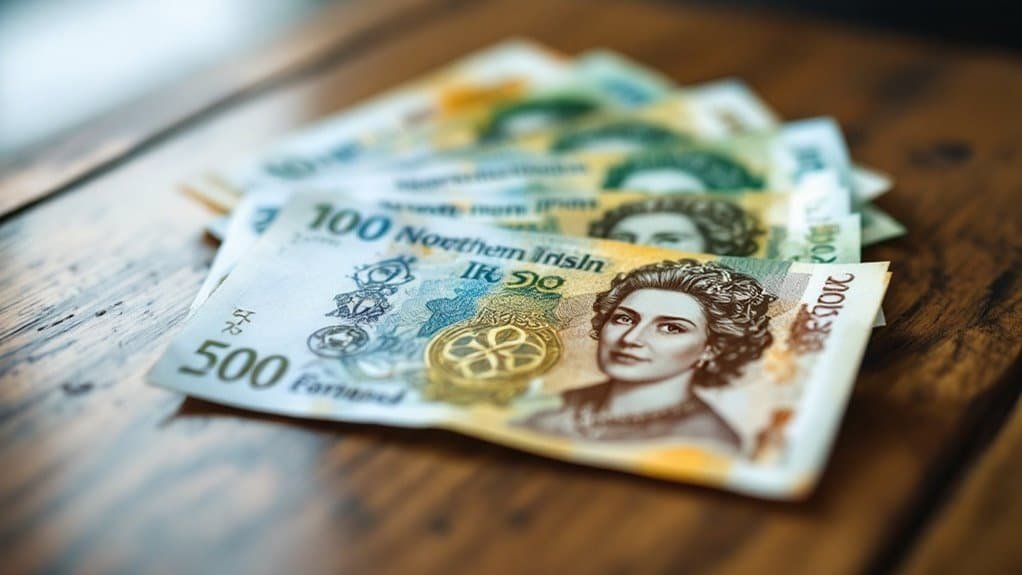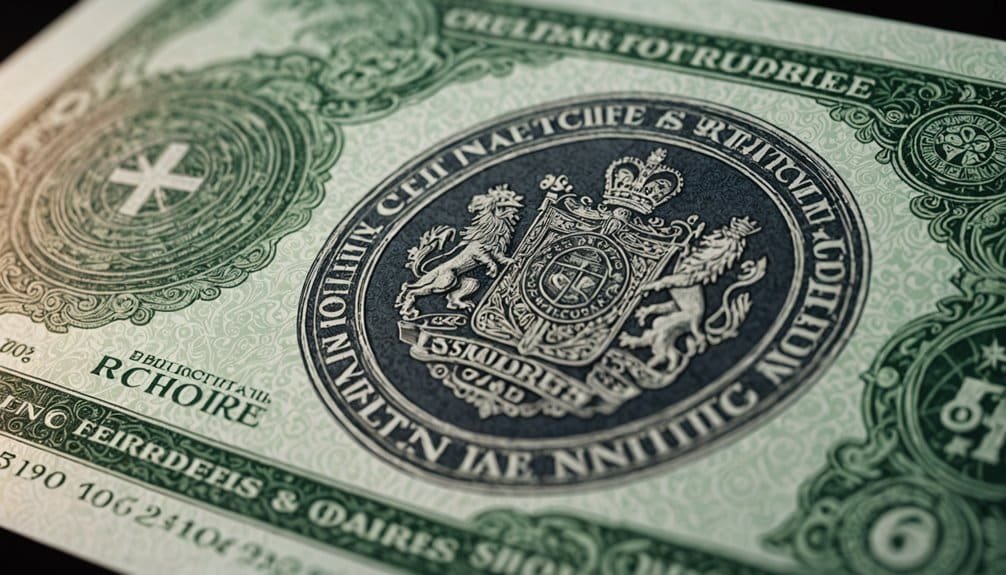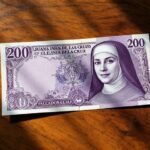
When exploring Northern Ireland's currency, you'll find the Pound Sterling (£) as the primary tender, with unique local banknotes issued by Bank of Ireland, Ulster Bank, and Danske Bank. You'll notice sophisticated polymer notes featuring clear windows and holographic strips, ranging from £5 to £100. While these notes aren't strict legal tender, they're widely accepted and backed by Bank of England deposits. You'll use eight coin denominations from 1p to £2 for transactions, and though acceptance can vary, major institutions typically honor local currency. Stick around, and you'll uncover more intricate financial nuances.
Key Takeaways
- Northern Ireland uses Pound Sterling (£), with local banks issuing unique banknotes that are distinct from Bank of England notes but equally valid.
- Local banknotes from Bank of Ireland, Ulster Bank, and Danske Bank range from £5 to £100, featuring advanced security measures like polymer technology and holographic elements.
- While not technically legal tender, Northern Irish banknotes are widely accepted and backed by deposits at the Bank of England, ensuring their financial legitimacy.
- Coin denominations from 1p to £2 facilitate diverse transactions, with eight different coin values supporting everyday financial interactions across various sectors.
- Currency design incorporates sophisticated security features including clear windows, raised print, and microprints, reflecting both economic functionality and regional cultural representation.
The Official Currency of Northern Ireland
In the heart of the United Kingdom, Northern Ireland's financial landscape is defined by its official currency: the Pound Sterling (£). This currency carries a rich currency history, deeply rooted in the UK's economic framework. Local banks like Ulster Bank, Danske Bank, and Bank of Ireland play a crucial role in issuing regional banknotes.
You'll find that the Pound Sterling, with its international code GBP, is universally used across Northern Ireland for all transactions, from everyday purchases to complex financial exchanges.
Exchange rates, primarily determined by market dynamics and managed by the Bank of England, govern the currency's value. Unlike the Republic of Ireland's Euro, Northern Ireland's Pound Sterling remains distinct, reflecting its unique economic identity.
When traveling, you'll need to be aware that while Bank of England notes are universally accepted, local Northern Irish banknotes might require additional consideration in different regions.
Local Bank Notes and Their Features
Currency diversity pulses through Northern Ireland's financial veins, with local banks wielding the unique power to issue their own banknotes. Regulatory oversight ensures these banknotes are backed by deposits at the Bank of England, maintaining financial stability.
Bank of Ireland, Ulster Bank, and Danske Bank craft distinctive notes in denominations from £5 to £100, each with specialized design characteristics reflective of their institutional identity.
The banknote history reveals a strategic shift to polymer technology, enhancing security and durability.
These modern notes feature sophisticated protection mechanisms: clear windows, holographic foil strips, raised print, microlettering, and UV ink patterns.
Color-coding helps you quickly distinguish denominations, with blue representing £5 and £50 notes, while pink and green signify £10 and £20 respectively.
Your understanding of these nuanced currency designs illuminates the complex financial landscape of Northern Ireland's local banking ecosystem.
Legal Status and Acceptance

The legal landscape of Northern Irish banknotes presents a nuanced regulatory environment that defies conventional currency myths. While not technically legal tender, these banknotes are widely accepted across the UK, backed by deposits at the Bank of England. Currency changes by First Trust Bank have further complicated the regional monetary dynamics, introducing new complexities to note circulation and acceptance.
You'll find that acceptance varies depending on location and denomination. Major institutions typically welcome Northern Irish notes, but smaller businesses might hesitate.
Post offices offer convenient exchange services, converting these notes to Bank of England currency without charge. The regulatory framework guarantees these banknotes maintain their value and legitimacy, despite their unique status within the broader British monetary system.
Coins and Financial Transactions
Maneuvering the monetary landscape of Northern Ireland reveals a robust coin-based financial ecosystem built on pound sterling denominations. Individual banking institutions in Northern Ireland issue unique pound banknotes without centralized authority, adding complexity to the financial system.
You'll find eight coin values ranging from 1p to £2, each serving distinct transactional purposes. The copper 1p and 2p coins and silver 5p, 10p, 20p, and 50p pieces facilitate small purchases, while £1 and £2 coins handle slightly larger transactions.
Your coin usage extends beyond simple buying, encompassing parking meters, public transport, and vending machines. Understanding coin value becomes vital in traversing cash interactions.
While contactless and card payments surge, coins remain integral to precise monetary exchanges. Some machines might challenge certain coin denominations, so carrying a diverse coin selection guarantees seamless financial interactions across Northern Ireland's economic landscape.
Security and Design of Currency

Beyond basic coin transactions, Northern Ireland's currency demands sophisticated security protocols and innovative design strategies.
You'll notice polymer notes featuring cutting-edge security innovations like clear windows, iridescent SPARK® ink, and intricate holograms that make counterfeiting extremely challenging. The design aesthetics aren't just visual—they're functional, with raised print for tactile identification and microprint enabling precise authentication.
Local banks like Ulster Bank, Danske Bank, and Bank of Ireland have strategically developed notes that blend community-inspired themes with robust anti-counterfeiting measures.
De La Rue, global banknote production leader, plays a crucial role in engineering these advanced security features for Northern Irish currency.
You'll appreciate how these polymer substrates offer enhanced durability, reducing wear and extending note circulation life. The collaborative approach involving design agencies and regulatory compliance guarantees each banknote represents not just monetary value, but a sophisticated security instrument carefully engineered to protect financial integrity.
Conclusion
You've navigated the complex landscape of Northern Ireland's currency, where tradition meets modern finance. The pounds and notes aren't just monetary instruments, but symbols of cultural identity and economic resilience. While global currencies merge and shift, these local notes stand as a proof of Northern Ireland's unique financial ecosystem, bridging historical nuance with contemporary economic pragmatism.







Interesting read, but isnt it confusing to have different note designs for the same currency? Seems like an unnecessary complication.
Interesting read. But arent Northern Irish and Scottish notes legally usable in England? Some clarity here would be great.
Interesting read, but does the local Bank Note design impact its acceptance rate in the rest of the UK?
Interesting points, but why arent Northern Ireland coins unique like the notes? Missed opportunity for cultural expression, dont you think?
Interesting read! But, isnt it weird that Northern Ireland pounds arent universally accepted in the UK?